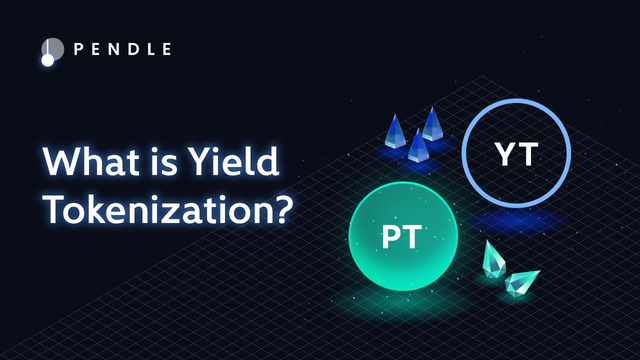Examining Pendle's DeFi yield solution for future yield buying and selling
This post is just for informative reasons and is not intended to promote any of the projects mentioned.
I discovered a really fascinating DeFi product that provides a novel approach to investing in yield-bearing assets.
I'll admit that it was a little confusing at first because the use of the word "future" made me immediately think that this was a leveraged derivative solution (as in futures or perpetual contracts in their original sense) in terms of yields, but on closer inspection, this is not exactly like a futures contract, but it does provide some level of leverage and, in fact, includes buying a derivative.

source
What trading yields and tokenization mean After writing a post recently on how integrated stablecoins on blockchains and protocol economies are improving yield farming, discovering Pendle offers new insights into how a third solution may be used to make DeFi much more stable. Naturally, that will be covered in a different article.
Now, what do we mean when we talk about trading and tokenizing yield? To make things easy, I'll describe this using Hive and HBD. The underlying asset must be locked in order to trade a future yield, however, and derivatives that represent the principal and the yield are designed to allow stakers to sell the yield while keeping ownership of the principal, and buyers of yield only require exposure to the yield. When Hive is staked or powered up into HP, it yields returns. Despite being a stablecoin, HBD is a yield-bearing token that generates 15% annual returns through HBD deposits.
Generally speaking, yields are not constant, and obtaining yields usually requires first acquiring the primary assets. As a buyer of yield, you may get the future yield at a discount if it rises over time without having to worry about significant financial risk, and as a seller, you can access your income right away and use it anyway you see fit. This eliminates significant exposure to the underlying asset.
Naturally, though, HBD is not the ideal token to use this on because witnesses decide its yield. Hive's token yield, on the other hand, is more variable and affected by many more factors, such as curation frequency. However, unless they have some sort of control on the curating activities within those accounts, this also puts yield purchasers at danger.
However, if the future yield is paid in a stablecoin and you anticipate that the price of the underlying asset will plummet as the yield rises, purchasing it becomes extremely profitable (and reduced risk). I'll be delving into this topic in a subsequent piece. That's it; to find out more about how it functions with assets like stETH, go to Pendle.finance. Keep in mind that I have no exposure to Pendle or ETH, and this is not financial advice.